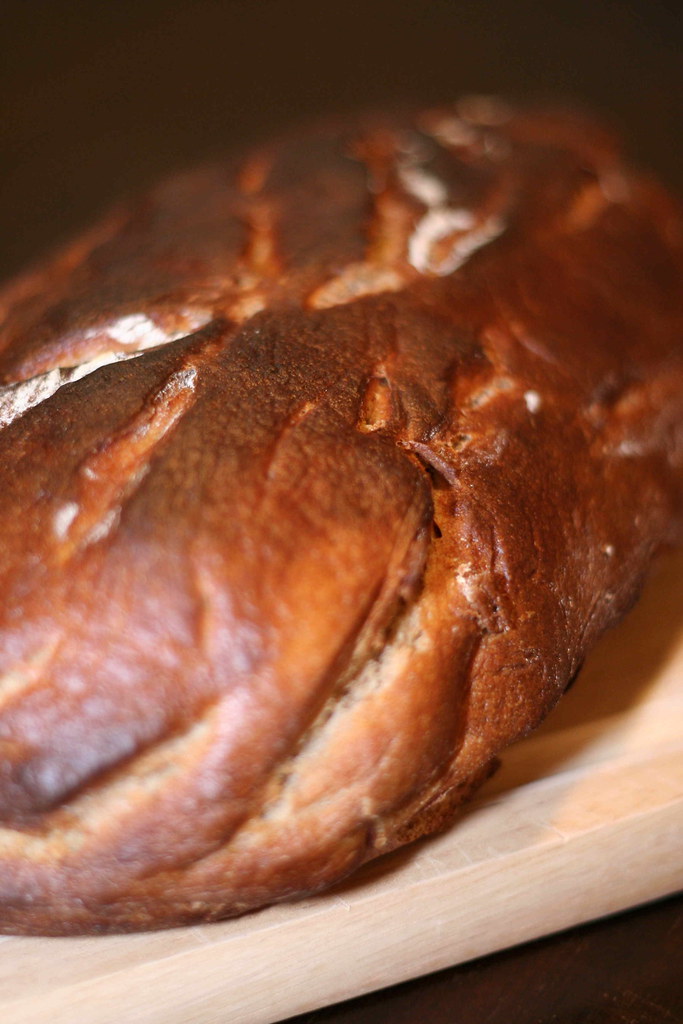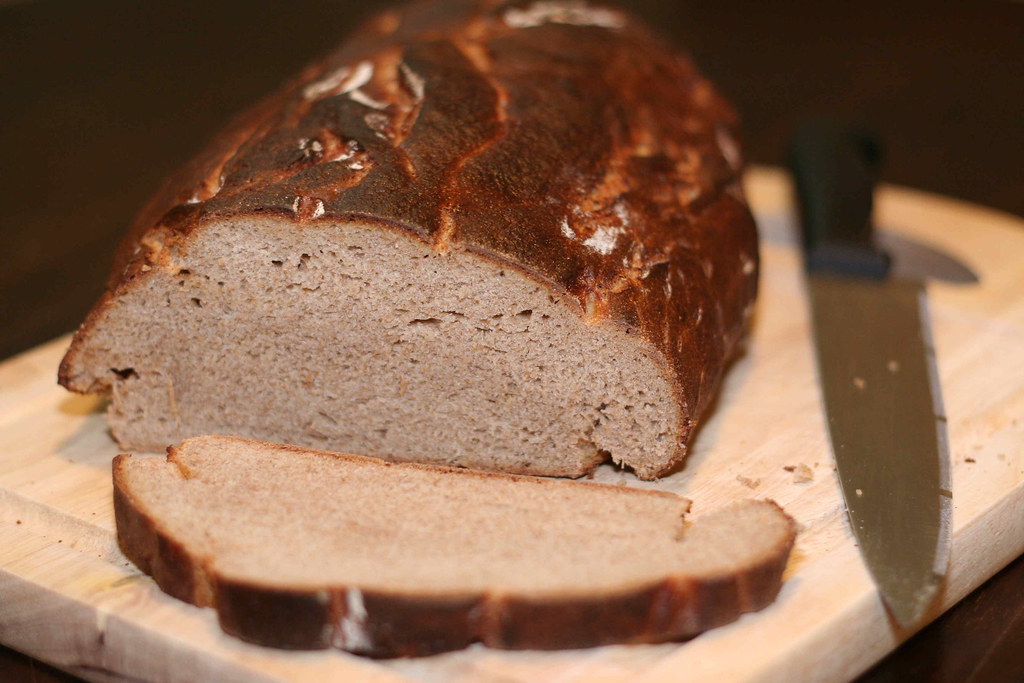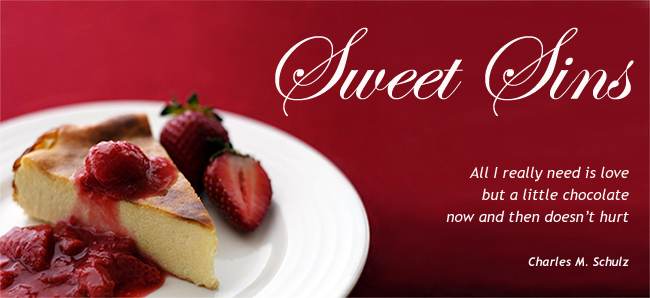
Crusty or soft, moist or a bit dry, shiny white or packed with grains and healthy wholemeal flour – there are so many different types of bread out there. However, almost everybody has some kind of idea how the perfect bread should be. Mostly conditioned during childhood, certain grown-ups will search for this special mix of taste and texture which is the only one – at least for them. My own search was going to be a desperate one when I arrived in Sydney, now a year ago. There were so many interesting things to try and taste but I already knew from two former visits "Down Under": The Australian bread wasn’t something to look forward to. No Laugenbretzeln (lye pretzel), no Vollkornsemmeln (wholemeal roll), and no Roggenbrot (rye bread) anymore – not to speak of all the other unique things to be found in a German bakery… Being sick and tired after a few weeks from eating all sorts of toast, I decided to bake my own bread. I wasn’t sure if it was possible to come even close to my idea of the perfect bread but I was utterly determined to try. Although I didn’t want to buy bread anymore, I also didn’t want to spend too many hours each week with bread baking. Eventually, my boyfriend heard my not so silent prayers and I got a bread baking machine as a Christmas present.
First, I have to say that I have never made my own bread before. Therefore, when I started I was prepared to accept a defeat. Well, you couldn’t really call it a defeat. My trial breads were all perfectly edible. However, during the first seven months, none of those breads passed the all important examination which is just a simple question: Would I be able to eat this bread over years without getting tired of it? For a convincing “yes”, the bread should have a high content of rye flour; the crumb should be heavy and moist while the crust would have to be dark and tough with a nice crack when biting into it. Bread like this tastes still good after a few days. My bread should simply be entirely different from all those pillowy industry-made kinds.
Sadly enough, no matter how hard I tried – there was always something wrong. When the bread came out of the oven, I usually thought: “Yes, this is it. That’s how it’s got to be!” While freshly baked bread always tastes good, after three or four days the truth will reveal itself. So I started twisting recipes to slowly work my way to the perfect bread. One thing was pretty clear at some point: I wasn’t going to succeed without using sourdough. For wheat-based breads, yeast is the usual rising agent. During the baking process, the gluten which is part of the flour builds a framework and allows the dough to rise. However, rye flour doesn’t contain enough gluten for building up such a framework. With only yeast as a rising agent, rye-based dough will remain clingy and sticky and won’t be able to rise. Thus, I had no choice.
Sourdough – the word alone sounds both fascinating and frightening to me. This method to rise bread is known by mankind since thousands of years and is even mentioned in the bible. Any more questions why I am still a bit hesitating to try my hands on it? Therefore, I decided to cheat a little bit and used dried sourdough that my loving and caring mother had put into a little (well, maybe not so little) packet and sent to Australia. The first time, I used the directions on the package to create a so called Roggenmischbrot (bread with more rye flour than wheat flour). The result was pretty devastating. Taste wise, the bread was more or less okay but it hadn’t risen at all. The dough had stretched out over the whole baking tray and had only reached a height of approximately three centimetres – at the thickest part. I tried to console myself with the fact that the bread reassembled the famous “Vinschgauer”, a flat, hard and long-lasting rye bread from Southern Tirol. I did not use any sourdough for the next couple of months.
Anyway, I had to try again. On a certain evening, I decided to change a recipe for light rye bread. Instead of using two parts white bread flour and one part rye flour, I simply turned the ratio and – to make up for that – added the left-over sourdough from the formerly used package. I also added a bit more water noticing later that it was too much and then adding a bit more white flour. The resulting dough was relatively soft. I formed a big loaf with several hollows to obtain an uneven, rustic crust. I brushed with water, dusted with flour, let it briefly rise again, put it into the hot oven, made smothers to support rising and crust-building and simply hoped for the best. This time, I had also chosen a much higher temperature: 250 degrees Celsius for the first 15 minutes and then 220 degrees. In a bit less than half an hour, the bread was done. I was a bit worried when I first peeked through the oven window. The bread was done earlier than I had expected and I was afraid it would be too dark on the outside and undercooked on the inside. But when it was removed from the baking tray onto a cooling rack, I knew instantly: This time, simply everything had worked out. The crust was rather dark but had a smooth and glossy shimmer with a few floury streaks. The crumb was hearty and moist and smelled exactly like rye bread from home. And the taste – a thick slice just with butter on top was simply perfect. Even after four or five days (it was a big loaf), it did not dry out nor did the taste change at all. I have never felt so satisfied with my bread baking results.
However, there was already a worrying thought in my mind: Will I ever be able to reproduce this unique bread? I’ve written down the recipe right after the first piece of bread but – who knows? It will always be a challenge to bake the perfect bread.

Rustic Rye Bread, German style
The ingredients
375 ml water
3 tbsp vegetable oil
2 tbsp honey
1 tbsp salt
350 g rye flour
300 g white bread flour
2 tbsp gluten flour
50 g dried sourdough
2 tsp dry yeast
1
Put all wet ingredients in the baking pan of your bread baking machine. Put all dry ingredients on top and make sure that the salt does not touch the yeast. Choose the dough program.
2
When the dough program has finished, preheat the oven to 250 degrees Celsius (fan bake) and take the dough out of the baking pan.
3
Shape the dough into a big loaf without kneading too much. If you want to get a rustic crust, do not shape thoroughly. Better leave big, visible hollows on the surface. If you knead the dough too much at this stage, you will need to let it rise again.
4
Put the loaf on a baking tray with parchment paper. Brush the loaf with water and dust with flour if desired.
5
Put the loaf into the hot oven, close the door and wait a couple of minutes for reaching the desired temperature again. Take a cup with approximately 125 ml of water, open the oven door, splash the water on the bottom of the oven and quickly close the door.
6
After approximately 15 minutes, decrease the temperature to 220 degrees. After approximately 25-30 minutes, take the bread out. If it sounds hollow when tapped on the bottom, the bread will be done.
The source
Partly a recipe from my electric bread maker, partly my own creation.
The hint
If you want to enjoy a warm slice fresh from the oven, use a very sharp and serrated-edge knife for slicing. Otherwise, the steaming loaf will be squeezed too much and the crumb will cling together.
Feel free to experiment with different types of grains – sunflower kernels work very well.


No comments:
Post a Comment